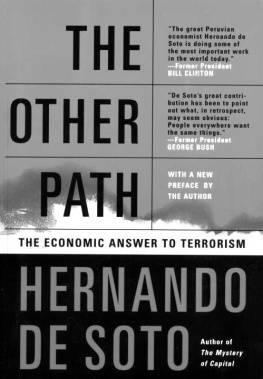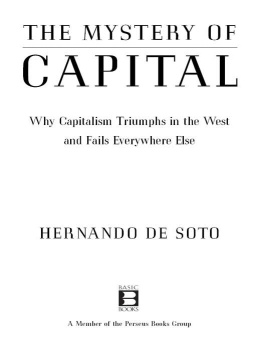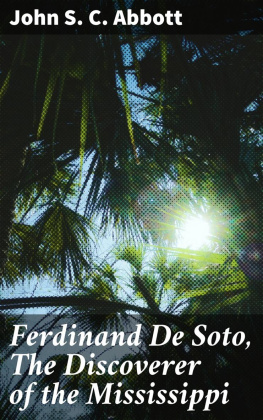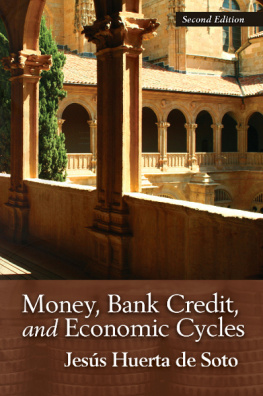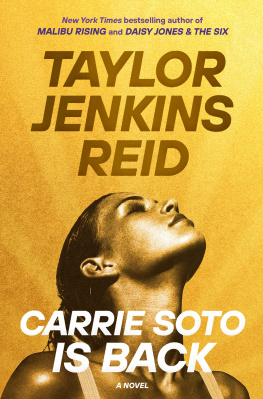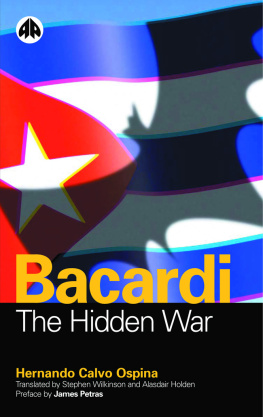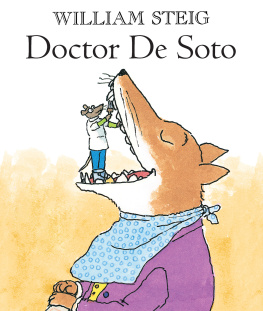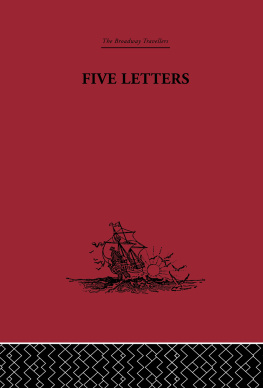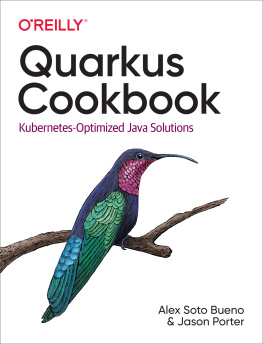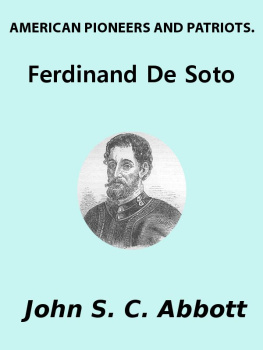"Though [de Soto] is hardly the first to study the underground economy, no one has delved into it more thoroughly or heralded its possibilities more enthusiastically. His hook, called The Other Path to contrast with the Maoist revolutionary group known as the Shining Path that has murdered thousands of Peruvians in recent years, has been a bestseller in Latin America since it was published in 1986. It has already stirred controversy among leading economists."
-Fortune
"The Other Path" is a major work, one destined to change the way the world understands wealth and poverty. Beyond Keynes, beyond Marx, it gets to the heart of the economic paradox of spreading poverty in an increasingly rich world."
- Forbes
"This is an important hook. It not only gives a detailed analysis of the informal economy in Peru but also suggests solutions to the nation's economic difficulties. It offers new hope to Latin Americans fearful for their countries and their personal wellbeing."
-Christian Science Monitor
"The Other Path is a considerable achievement. It should jolt Latin American governments and serve as a guide for all those concerned with helping the poorest of the poor.... This fascinating hook describes in detail how groups of poor people organise land-grabs and try to legitimise the homes they have built, how rudimentary land registers are organised, how informal-sector bus services are planned and launched, and how hawkers stake out streets for stalls and eventually create their own markets."
-The Economist
"Hernando de Soto frees himself from the sterile terrain of ideological confrontation. His precise statements go far beyond the case of Peru and take on a universal value. The Other Path] is a new, original, and fundamental work that ought to be carefully studied by all those responsible for the political, economic, and cultural life of developing countries that believe themselves to be developed."
-Jean Francois Revel
"Important.... It is a success.... It has opened a passionate debate about its 'revolutionary' recipe."
-Zbigniew Brzezinski, former director of the National Security Council
"... Hernando speaks for the poor ... makes a revolutionary critique of elites both of the right and left."
- Michael Novak, theologian and writer
THE OTHER PATH
Also by Hernando de Soto
The Mystery of Capital: Why Capitalism Triumphs in the West and Fails Everywhere Else
THE
OTHER
PATH
THE ECONOMIC
ANSWER TO TERRORISM
Hernando de Soto




In memoriam
Jan Tumlir
To Latin America's competitive workers and entrepreneurs, formal and informal, who through their efforts are tracing the other path.
And, of course, to my left-wing friends, whose ideas I share, in the hope that we might also agree on ways to achieve them.
A Note from
the Publisher
The great threat to freedom in the past century was the totalitarian state-the villains of George Orwell's 1984 flying whatever flag they chose. In our present century the threat seems to come from innumerable small groups fired by an irrational hatred and a lust for destruction, who find followers among the impoverished and desperate. We cannot kill this hydra with swords. Instead, we must deprive it of the desperation that replenishes it. This is the urgent message of The Other Path.
Of all the terrorist movements since World War II that had any realistic potential to form a national government, only one was decisively defeated on the battleground of ideas. Sendero Luminoso, the Shining Path, arose in Peru in 1980. It was distinguished by both the radicalism of its Maoist ideology and the viciousness of its tactics. An American diplomat, Bernard Aronson, called the Shining Path "the most murderous guerilla group ever to operate in the Western Hemisphere" and compared them to the Khmer Rouge. At one point this group commanded eighty thousand followers-two-thirds the size of Great Britain's standing army-and was the largest political organization in the country.
Today the Shining Path numbers some 250. More importantly, its credibility within Peru is nonexistent: it no longer has the capacity to arouse people's interest. The task of making the Shining Path politically irrelevant was accomplished primarily by ideological means. Hernando de Soto offered an alternative vision of Peru's poor. Rather than see them as the proletariat, he showed that they were in fact budding entrepreneurs whose greatest desire was not to bring down the market economy but to join it. Originally published in 1986, The Other Path is the book which first proposed that alternative vision and provided the catalyst for terrorism's defeat.
Contents
xi
PART ONE
Informality in Photos appears after page 118.
PART TWO
Preface
"Boooom!!!" The massive explosion hit at 8:00 P.M. on July 20, 1992, while many of us were still working at the Instituto Libertad y Democracia (ILD) offices in Miraflores, a suburb of Lima. The blast was so powerful that it smashed walls and windows, sending splinters of glass, metal, and furniture shooting through rooms like jet-propelled daggers. It was a car bomb, and the explosion hurled the car's engine across the property, destroying everything in its way until it crashed into the wall of a neighbor's house some one hundred meters to the rear of our building. For miles around, a huge mushrooming cloud could be seen rising above our devastated headquarters.
It was not the first time we had been the target of terror. The Shining Path, which had been terrorizing Peru since 1980, considered the ILD their intellectual nemesis. They had bombed our offices before, shot at our automobiles, and threatened our people. That nagging feeling that there is bound to be a next time saved many lives. Three minutes before the bomb went off, we heard the familiar cracking of the gunfire directed at our building intended to force our security guards to take cover behind the outer walls protecting the ILD so that a group of Shining Path commandos could deliver a much more deadly package-in this case, according to the police investigation, a car containing four hundred kilos of dynamite and ammonium nitrate. The warning shots gave us precious seconds to dive for cover and avoid the deadly debris that soon was hurtling through our offices.
Some, however, were not so lucky. According to the press, three people died in the attack and nineteen were wounded. Among the wounded, Edilberto Mesias, an ILD security guard who had taken a bullet in the stomach, crawled to a nearby hospital and managed to survive. Marco Tulio Ojeda, a policeman assigned to the ILD, heroically rushed to the car to try to tear out the bomb's burning fuse but was seconds too late: the car blew and Marco was immediately killed. By the time the twenty of us who were inside the building got up from the floor, shook off the glass, metal, and dust, and rushed outside to assess the damage, we found a Franciscan priest already administering last rites to some of the victims lying on the sidewalk, innocent passersby who had been killed by the gunfire and explosion.

